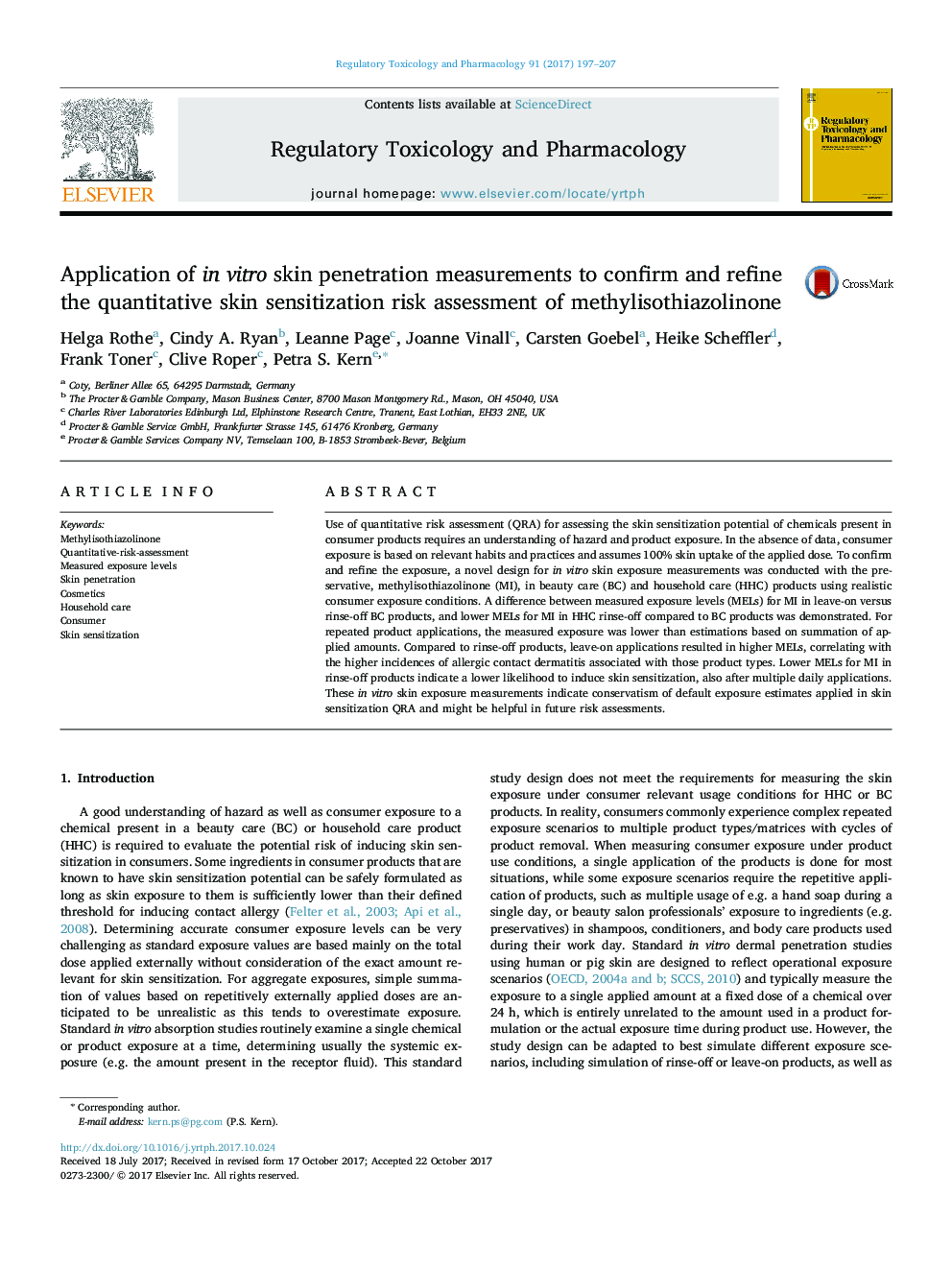| Article ID | Journal | Published Year | Pages | File Type |
|---|---|---|---|---|
| 8551978 | Regulatory Toxicology and Pharmacology | 2017 | 11 Pages |
Abstract
Use of quantitative risk assessment (QRA) for assessing the skin sensitization potential of chemicals present in consumer products requires an understanding of hazard and product exposure. In the absence of data, consumer exposure is based on relevant habits and practices and assumes 100% skin uptake of the applied dose. To confirm and refine the exposure, a novel design for in vitro skin exposure measurements was conducted with the preservative, methylisothiazolinone (MI), in beauty care (BC) and household care (HHC) products using realistic consumer exposure conditions. A difference between measured exposure levels (MELs) for MI in leave-on versus rinse-off BC products, and lower MELs for MI in HHC rinse-off compared to BC products was demonstrated. For repeated product applications, the measured exposure was lower than estimations based on summation of applied amounts. Compared to rinse-off products, leave-on applications resulted in higher MELs, correlating with the higher incidences of allergic contact dermatitis associated with those product types. Lower MELs for MI in rinse-off products indicate a lower likelihood to induce skin sensitization, also after multiple daily applications. These in vitro skin exposure measurements indicate conservatism of default exposure estimates applied in skin sensitization QRA and might be helpful in future risk assessments.
Related Topics
Life Sciences
Environmental Science
Health, Toxicology and Mutagenesis
Authors
Helga Rothe, Cindy A. Ryan, Leanne Page, Joanne Vinall, Carsten Goebel, Heike Scheffler, Frank Toner, Clive Roper, Petra S. Kern,
